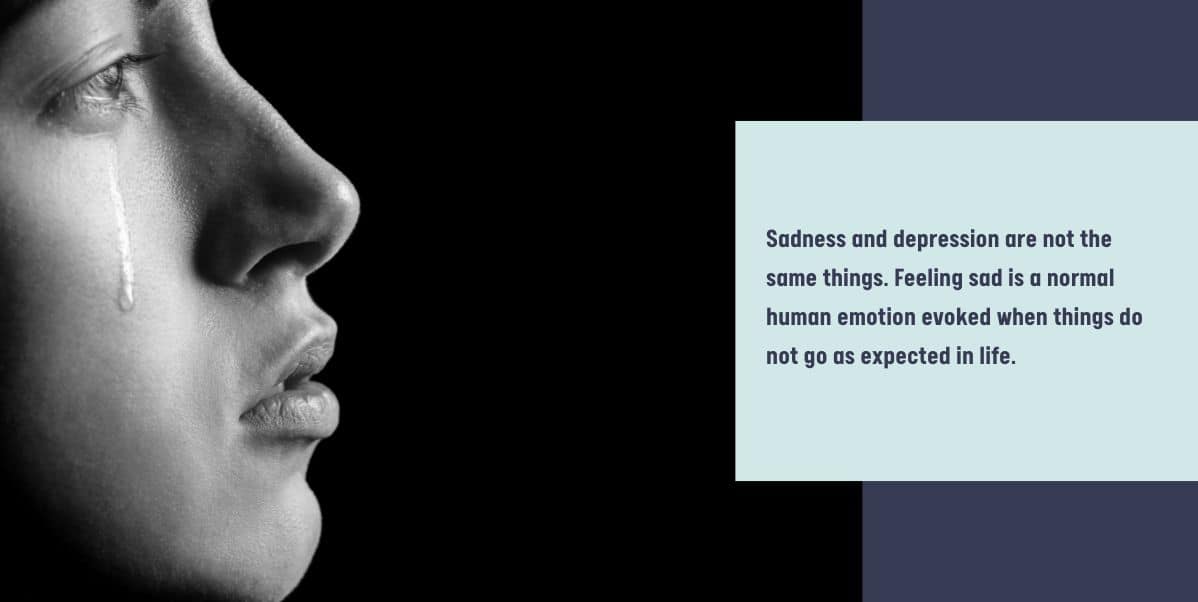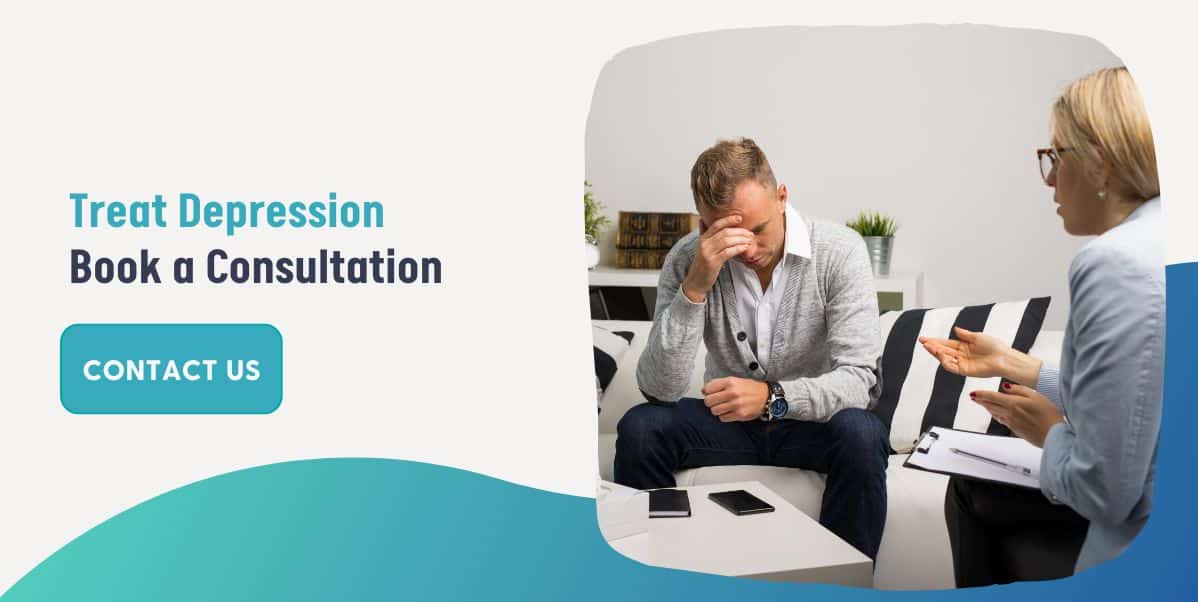
Depression can sometimes be a solace for challenging times. Although a person cannot be addicted to this mental illness like substance use disorder, the condition can create a visual cycle from mood, emotional, and behavioral dysregulation, making it seem like an addiction to sadness. What is depression? Depression is a mood disorder characterized by persistent low moods, feelings of helplessness and a lack of interest in life.
Depression and Sadness
Sadness and depression are not the same things. Feeling sad is a normal human emotion evoked when things do not go as expected in life. When you break up with a significant other, you may feel sad. You can also feel sad when a loved one disappoints you. The feeling is never permanent. It is not subject to situation changes.
Sadness is also not unhappiness. Although happiness and sadness are opposites, unhappiness only forms a small part of the complex emotion that is sadness. A person’s degree of sadness affects their level of happiness and vice versa.
On the other hand, depression is a mood, not an emotion. It manifests when life curve balls evoke ongoing sadness instead of a momentary surge of emotions. Depression induces persistent feelings of sadness and despair. Furthermore, the mental and physical anguish inflicted by this disorder may be impossible to undo with life improvement.
Additionally, depressive symptoms manifest as a package, and persistent sadness is only one sign. Others include:
- Hopelessness – despair about life getting any better accompanied by feelings of doom
- Apathy – loss of interest or enthusiasm about life, hobbies, social life, work, or responsibilities
- Irritability – small insignificant things become agitating
- Guilt – feeling burdensome to loved ones and friends and blaming self for outcomes
- Feelings of worthlessness – low self-worth and esteem, feeling inadequate or undeserving
- Negativity – a negative mindset breeds negative emotions
- Discontent – displeasure with life, self-image, accomplishments, or futuristic expectations
- Anxiety – continuous worry and fear over the unknown
Other Depression Symptoms
Depression feels like a perpetual state of sadness that continues to worsen, especially in the absence of treatment. The disorder stems from mood dysregulation, which eventually affects emotion, thoughts, and behavior. It may be resistant to psychotherapy and antidepressants. In such cases, Transcranial Magnetic Stimulation (TMS) therapy can help alleviate symptoms for long periods or permanently. The symptoms include:
Behavioral Depressive Symptoms
- Excessive crying – the triggers may be unrelated or inexistant
- Social isolation – although misery craves company, depression pushes one to seclusion. They become withdrawn and lonely even when around people.
- Angry outbursts – agitation and irritation make one snap over seemingly insignificant things.
- Inactivity – a person spends most of their time sleeping or doing nothing because of a lack of energy and interest in life.
- Eating disruption – appetite increase or suppression makes one overeat due to persistent hunger or avoid food entirely, leading to excessive weight gain or weight loss.
- Sleep interruption – depression increases insomnia or sleepiness and restless sleep.
- Suicidal attempts – a person may try to take their own life or make plans about the event.
Cognitive Depression Symptoms
- Poor concentration – inability to focus on everyday tasks
- Slowness – appears as slacking when working, walking, reasoning, or engaging
- Forgetfulness – not remembering times or dates for important events
- Rumination – persistent negative thinking
- Suicidal ideation – fascination with thoughts of death
Depression and Anxiety
Depression and anxiety are two often confused mood disorders. Anxiety feels different from how depression feels. However, they can occur together as comorbidities. Depression is ongoing sadness and a lack of interest in life. The two states are the foundation of its symptoms.
On the other hand, anxiety disorder is a mood disorder characterized by excessive and persistent worry over mundane things and circumstances. It develops from an overworking or over-excited stress response cycle, which also goes by anxiety. Like sadness, anxiety is a healthy mood that prepares the body for fight or flight.
The brain initiates the stress response cycle after perceiving internal and external danger, triggering hormones and neurotransmitters to activate and sustain anxiety. Adrenaline, one of the stress hormones, stimulates energy production by increasing blood flow, breathing, and heart rate. It also causes muscles to contract and relax rapidly.
The physiological state increases the oxygen supply to the brain and muscles. The brain becomes alert, and muscles surge with energy by using oxygen as fuel. Finish a task by a close deadline or avoid oncoming traffic because of this surge in energy.
However, the body can fail to pick up internal and external threats correctly due to overstimulation or genetic malfunctions, resulting in an anxiety disorder. Other symptoms of anxiety include nausea, diarrhea, feelings of doom, appetite suppression, lack of sleep, agitation, and restlessness.
TMS and Depression
If you’ve tried traditional treatments for depression and haven’t found relief, TMS therapy may be a good option for you. TMS therapy is a safe and effective treatment for major depression that uses focused magnetic pulses to the prefrontal cortex. This non-invasive procedure is FDA-approved, and many people have found relief from their symptoms after undergoing TMS therapy.
We have multiple locations throughout South Florida. Our team of experts is here to help you every step of the way, so please don’t hesitate to contact us. TMS treatment is covered by most insurance plans and can offer significant relief from depressive symptoms.



